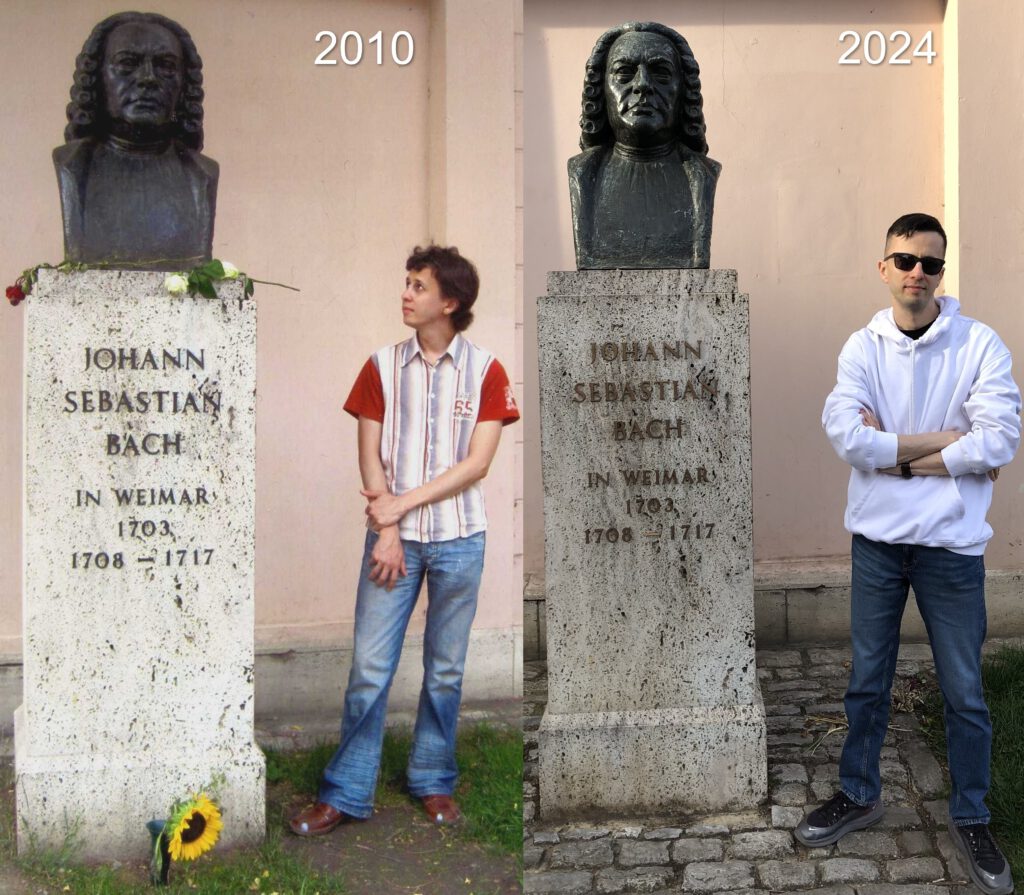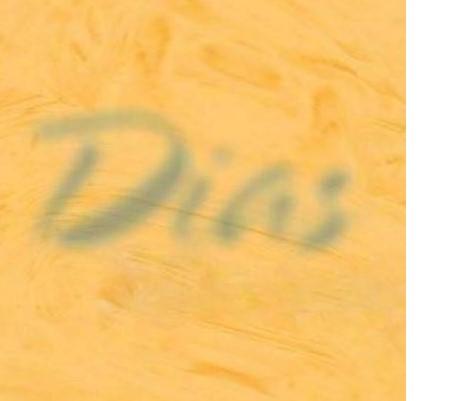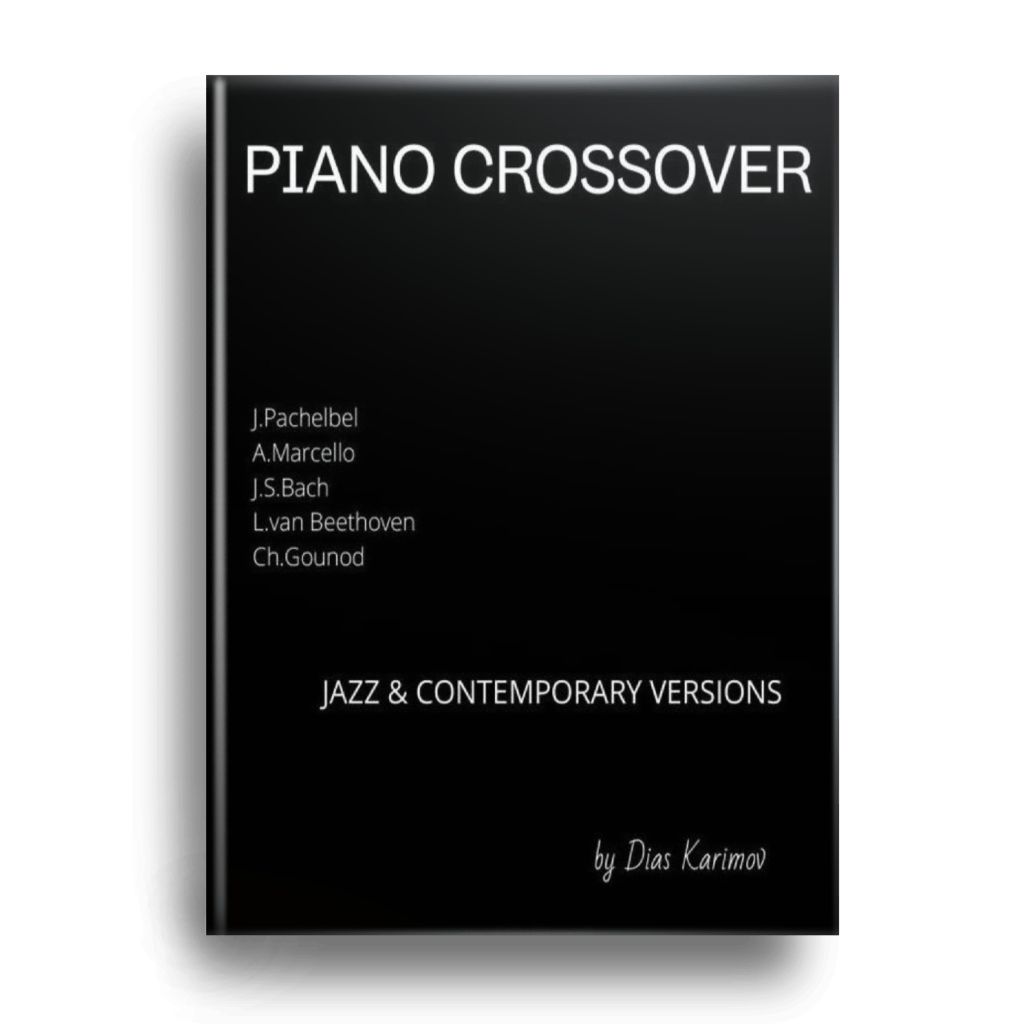
Intro
In this article, we’ll delve into the world of crossover music or “Third Stream” – a unique style that blends elements of classical and jazz music. We’ll explore what crossover music is, its defining features, and showcase some of our favorite crossover arrangements available in our store.
Crossover in music represents a fusion of various genres and styles. Typically rooted in classical and jazz, crossover arrangements can also incorporate other genres like rock, pop, or world music, depending on the artist and context.
One key characteristic of crossover music is its ability to offer a fresh perspective on familiar melodies and compositions. Arrangers and musicians in this genre often experiment with harmonies, rhythms, and instrumentation to create new and distinctive sonic textures.
Crossover music opens up opportunities for audiences to enjoy familiar tunes in unexpected and exciting interpretations, while also broadening the horizons of musical creativity.
History of Crossover
The concept of merging different musical genres and styles has ancient roots and is found in the musical practices of many cultures. However, crossover as an independent genre began to actively develop in the 20th century.
One of the most significant moments in the history of crossover music was the arrangement of George Gershwin’s “Rhapsody in Blue” in the style of blues. This classical masterpiece was reimagined in the blues style, creating a new sonic experience that enriches Gershwin’s musical legacy and opens his melodies to new generations of listeners.
Over time, numerous talented musicians and arrangers continued to experiment with the crossover style, adding new elements and directions to it. From classical composers who were inspired by jazz motifs to jazz musicians creating new versions of classical works, crossover became a fertile ground for creativity and innovation.
Style
The crossover style of music opens up vast opportunities for reimagining classical pieces and transforming them into something entirely new and original. Here are some of the key ways in which musicians and arrangers infuse their unique crossover arrangements with distinctive sounds:
1. Harmony and Accompaniment Alteration: One of the key aspects of crossover arrangement is modifying the harmonic structure and accompaniment to give the piece a fresh sound. This may involve adding jazz chords, incorporating rhythmic figures and harmonic progressions typical of other genres.
2. Improvisation and Variation: Crossover arrangements often include elements of improvisation and variation, allowing musicians to express their individuality and creativity. This can involve jazz solos, vocal freestyles, or instrumental variations on well-known melodies.
3. Utilization of New Instruments and Sounds: Crossover arrangements frequently employ non-traditional instruments and sounds to give the piece a fresh and unique character. This may involve the use of electronic instruments, sound sampling, or even incorporating elements of world music.
4. Combination of Different Genres and Styles: Crossover music often blends elements of various genres and styles, creating a unique sound that defies clear definition. This could involve mixing classical melodies with jazz rhythms, rock harmonies, or electronic music elements.
5. Integration of Texture and Tempo: Crossover arrangements often play with texture and tempo, creating rich and dynamic sonic landscapes. This may include the use of percussion, effects, and tempo changes to highlight the emotional and musical aspects of the piece.
6. Experiments with Form and Structure: Crossover music often employs unconventional forms and structures to add originality and creativity to the arrangements. This could involve using cyclical structures, blending different forms, or even creating entirely new musical forms.
7. Emotional Interpretation: Crossover arrangements are typically geared towards emotionally impacting the listener. This may include expressive performance techniques, emphasis on musical dramaturgy, and creating intense musical effects to underscore the emotional power of the piece.
These and other techniques allow arrangers and musicians to create unique and original versions of classical pieces, opening up new horizons for musical creativity.
Crossover Arrangements on Store-Dias.com
This section of the store features crossover arrangements – unique reinterpretations of classical pieces that give them a completely new sound and style.
Additionally, you can buy on Amazon the “Crossover Piano Book” by Dias Karimov – A collection of crossover arrangements for piano.
This unique collection presents classical works by great composers such as J.S. Bach, C. Gounod, A. Marcello, L. van Beethoven, and J. Pachelbel, arranged in the jazz and contemporary style of Dias Karimov. Each arrangement breathes fresh and original life into well-known melodies, blending classical music with elements of jazz and modern performance art.
Examples of arrangements include unique transcriptions combining two pieces into one, original bass solos, improvisational jazz middle sections, and the use of R&B, reggae, and other genre styles. These arrangements offer a unique opportunity to delve into the world of crossover music and broaden your musical horizons.
Whether you’re a professional pianist, music educator, or simply a music enthusiast seeking new and exciting sounds, the “Crossover Piano Book” will be an indispensable addition to your music library. Immerse yourself in the world of crossover music and discover new facets of musical creativity with this captivating collection of arrangements.
Outro
My goal when creating crossover arrangements is to approach each piece with immense respect and love for the classical compositions. Their purpose is to carry the music through time and present it in modern contexts. Each arrangement blends tradition and innovation, preserving the original spirit of the piece while giving it new life.
All crossover arrangements are crafted with deep respect and affection for the compositions, aiming to carry them through time and present them in contemporary settings.
Crossover music is more than just a fusion of different genres and styles; it is an art of combining traditions and innovations, past, and present. It represents a unique path to creativity, allowing musicians and arrangers to express themselves and their individuality through reimagining classical works and creating entirely new sounds.
And remember: “It’s not just about what you play, but how you play it.”
Respectfully, Dias



